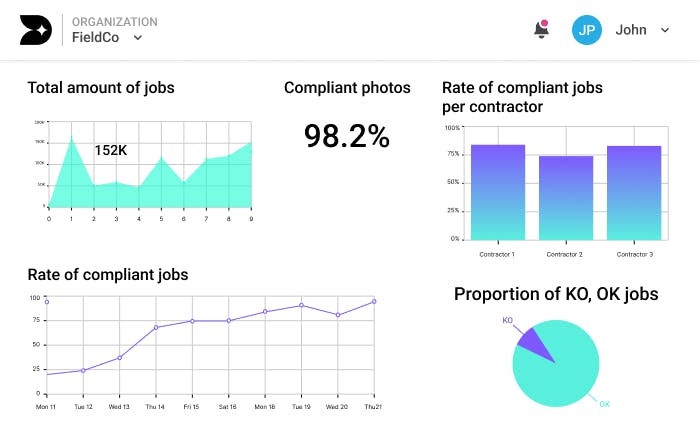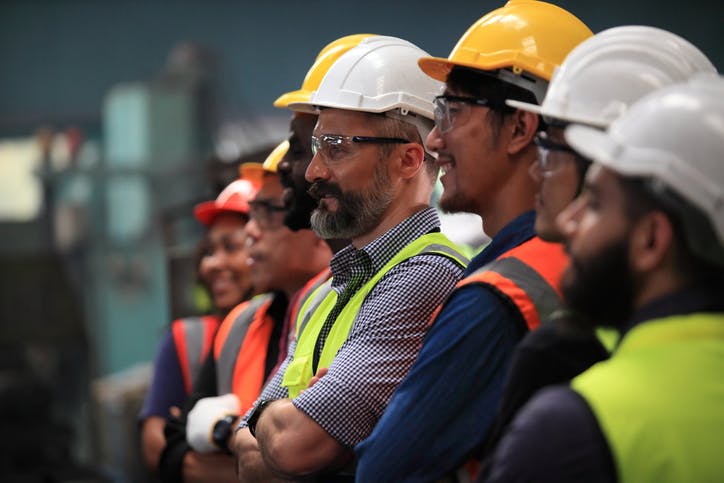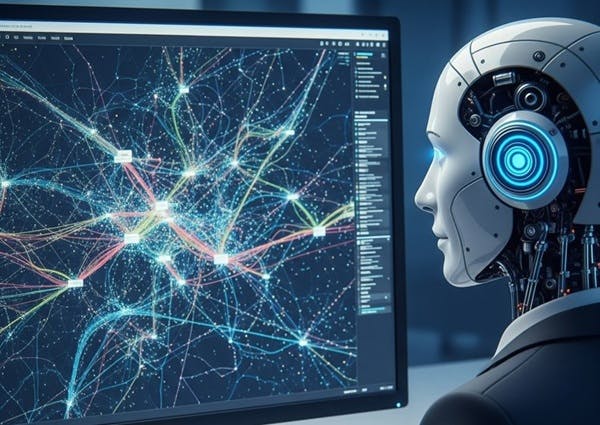Field operations involve deploying and managing teams and resources across various locations to execute tasks, provide services, or maintain infrastructures. These operations are crucial for some industries, such as telecommunications, utilities, and construction, where work must be performed in diverse and often remote environments. Companies must be efficient in running their operations to avoid overwhelming operating costs.
Visual AI, a technology that field operation companies are growingly using, is today making its way to help them meet this efficiency objective. It leverages computer vision to automate quality control in field operations and gathers robust data about field intervention performances. In this article, we will dig into this Business Intelligence (BI) capability and explain how it helps field operations and infrastructure managers make informed business decisions when piloting field crews and planning operations.

Monitoring Field Teams' Performances with Business Intelligence Data
Field Operations Managers often face the challenge of effectively tracking the performance of their teams and subcontractors. Indeed, what happens in the field can be hard to follow for those working in back-office or high-management positions. Business Intelligence data from a Visual AI solution used by field technicians provides real-time monitoring capabilities, allowing managers to monitor how their teams perform.
Even though field operation companies already use Field Service Management (FSM) tools to help keep track of their team’s status, there are quality KPIs that these platforms cannot measure. Conversely, Visual AI, besides its real-time quality control capability, provides business intelligence to arm operations managers with at-scale indicators, such as photo report completeness, photo report conformity, field workers’ job conformity, or the intervention success rate. Integrating Visual AI with FSM or GIS systems ensures data is directly fed into company processes, enhancing overall efficiency. It even presents this data from various perspectives, according to the company’s needs. For instance, it is possible to follow the job conformity rate over time for the entire field crew, per contractor, or even per geography.

By analyzing field operations quality, Visual AI can indicate which tasks are carried out successfully and which are often rejected. This enables field operations managers to rapidly identify the causes of unsuccessful operations and understand which equipment or tasks are the most problematic for field workers. Such information enables managers to implement training and action plans proactively.

Leveraging Business Intelligence Data for Smart Operation Planning
Efficiently planning operations and managing the dispatch of field teams is critical to minimizing operational costs and maximizing productivity. Business intelligence tools, powered by data collected through Visual AI, provide valuable insights that enable more intelligent field operations planning.
Field operation managers can improve their pilot operations by analyzing historical data from past operations that Visual AI collects. For instance, they can leverage inventory data on a fiber street cabinet to ensure there is still enough space to connect a subscriber and dispatch a technician. Smart planning reduces travel time, lowers fuel costs, and ensures that field teams are well-prepared for the tasks ahead, leading to increased operational efficiency and reduced downtime.
Proactive Infrastructure Maintenance using Business Intelligence Data
Another significant advantage of Visual AI in field operations is its ability to help infrastructure managers monitor and continuously assess infrastructure conditions. Traditional methods of infrastructure maintenance often rely on scheduled inspections, which may not always detect issues before they become critical.
As data provided by Visual AI analyzes assets on pictures and videos, detecting causes of degradation and identifying infrastructures in critical status is easier. Indeed, this data is then calculated into a health score indicating the physical condition of the infrastructure at a given moment.
This proactive approach allows infrastructure managers to intervene before infrastructure issues escalate by planning maintenance where and when needed, preventing costly repairs and service disruptions. By leveraging computer vision technology, infrastructure companies can maintain their assets optimally, extend their lifespan, and ensure safety and reliability.
They can also use infrastructure health data to identify the party responsible for the damage or degradation of assets and assign responsibility for intervening to repair them.

Integrating Visual AI with Business Intelligence data offers transformative benefits for field operations. By providing real-time tracking of teams and subcontractors, enabling smart dispatch planning, and facilitating proactive infrastructure maintenance, BI empowers companies to operate more efficiently and effectively. Visual AI brings the data to companies, and BI turns this data into valuable insights. As technology advances, the synergy between BI and Visual AI will undoubtedly play a crucial role in enhancing the capabilities and performance of field operations across various industries.





